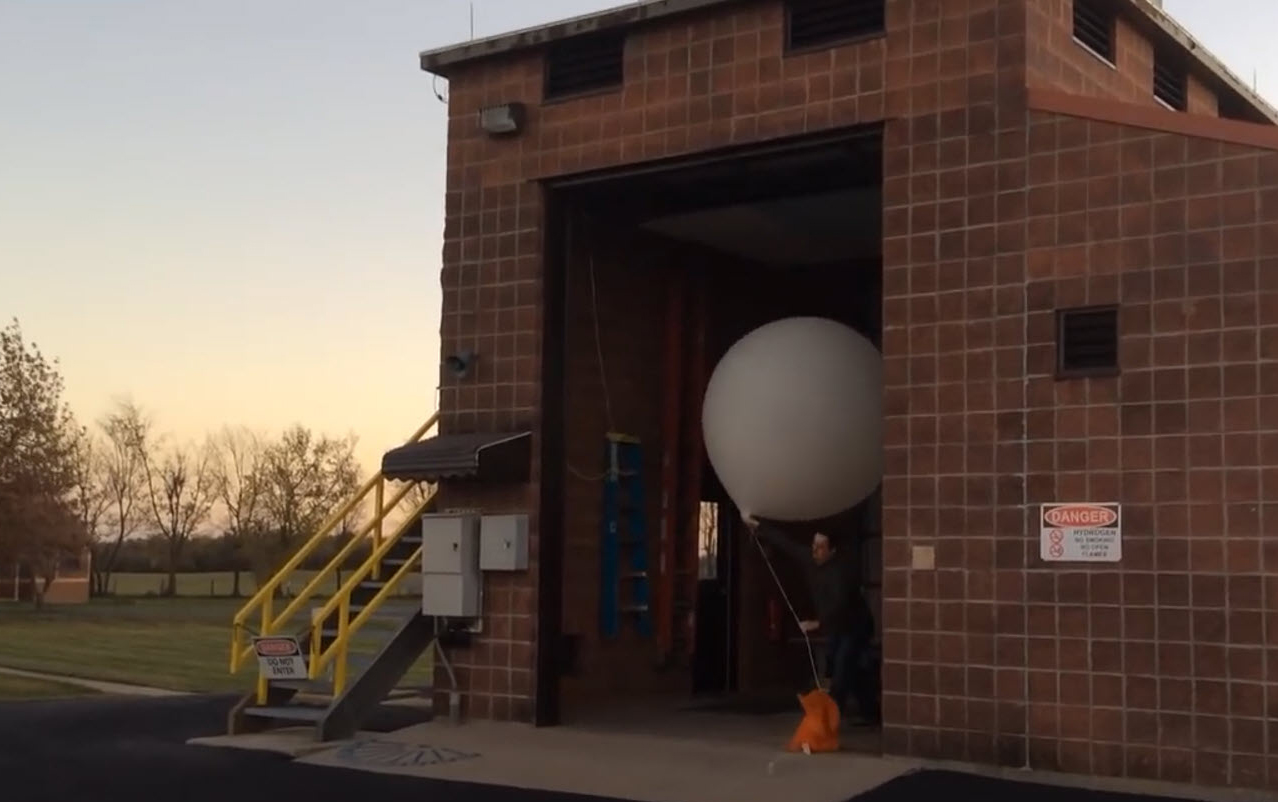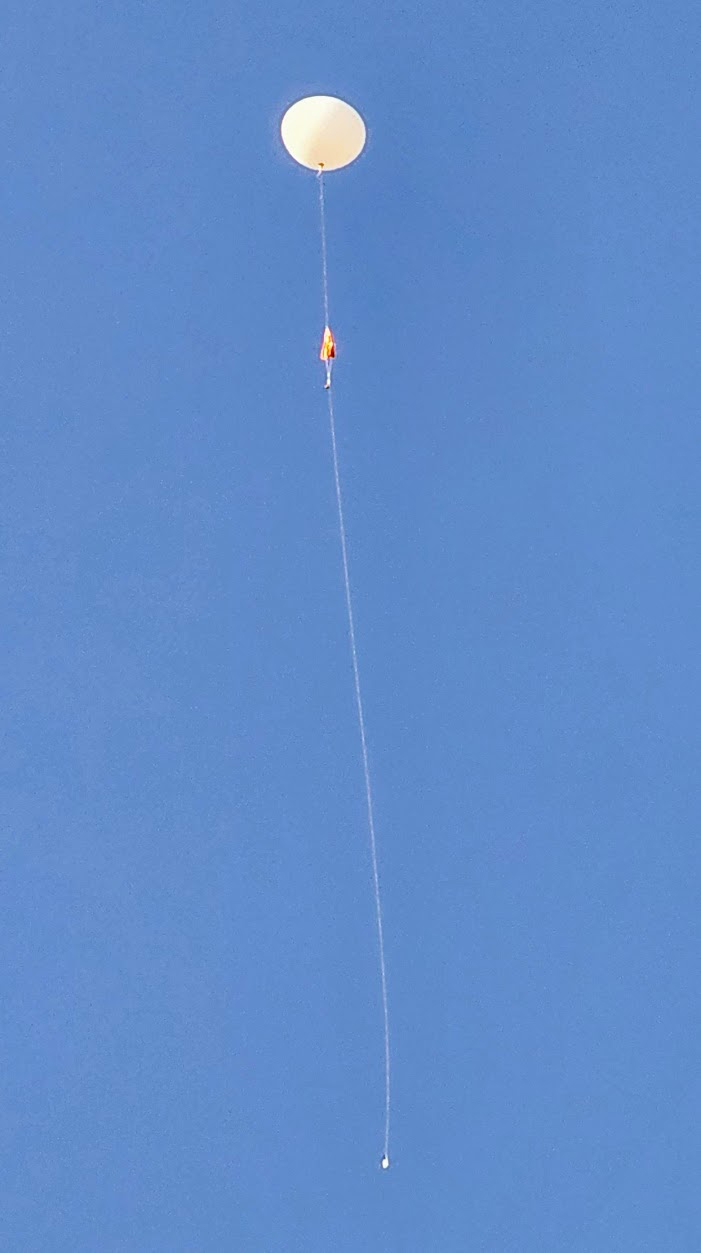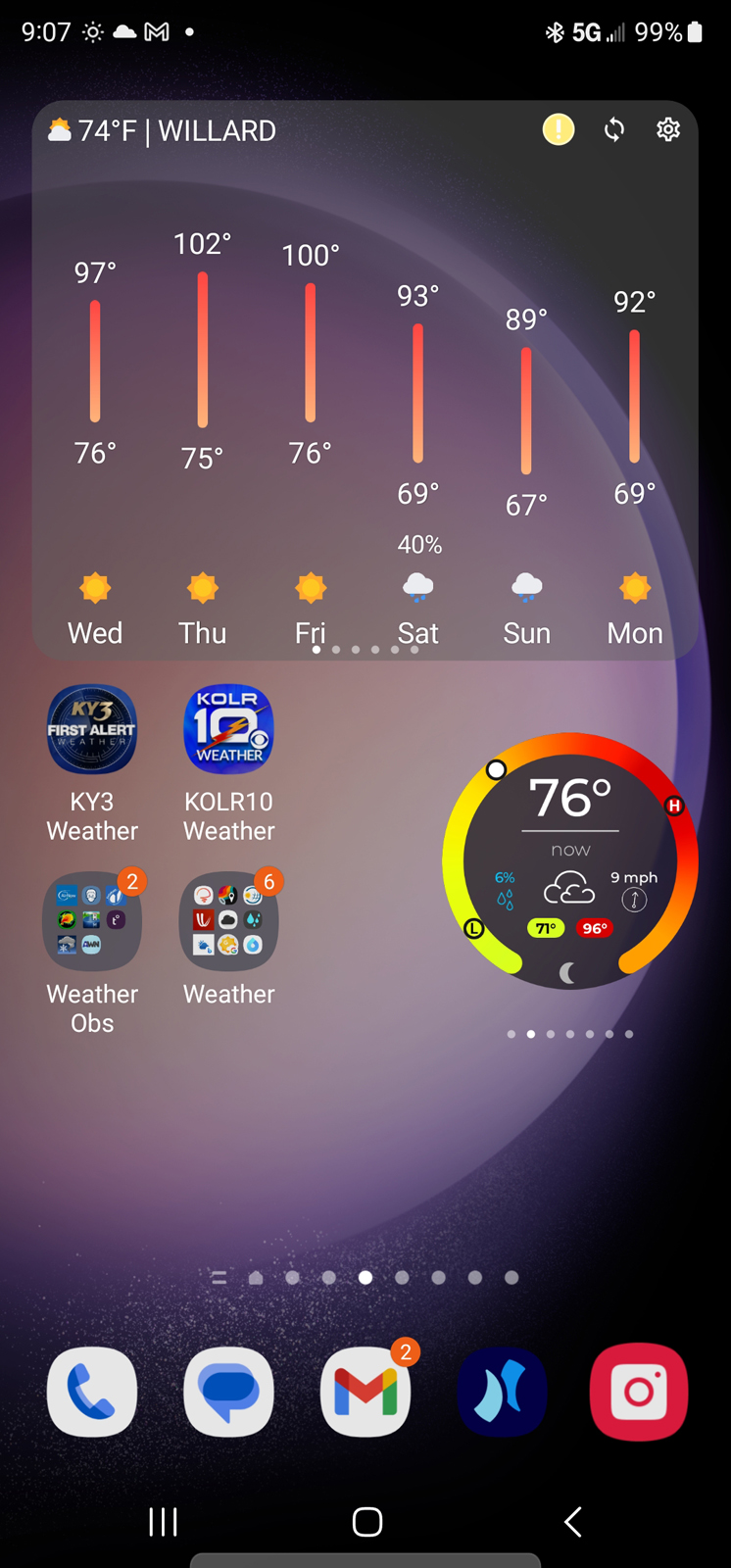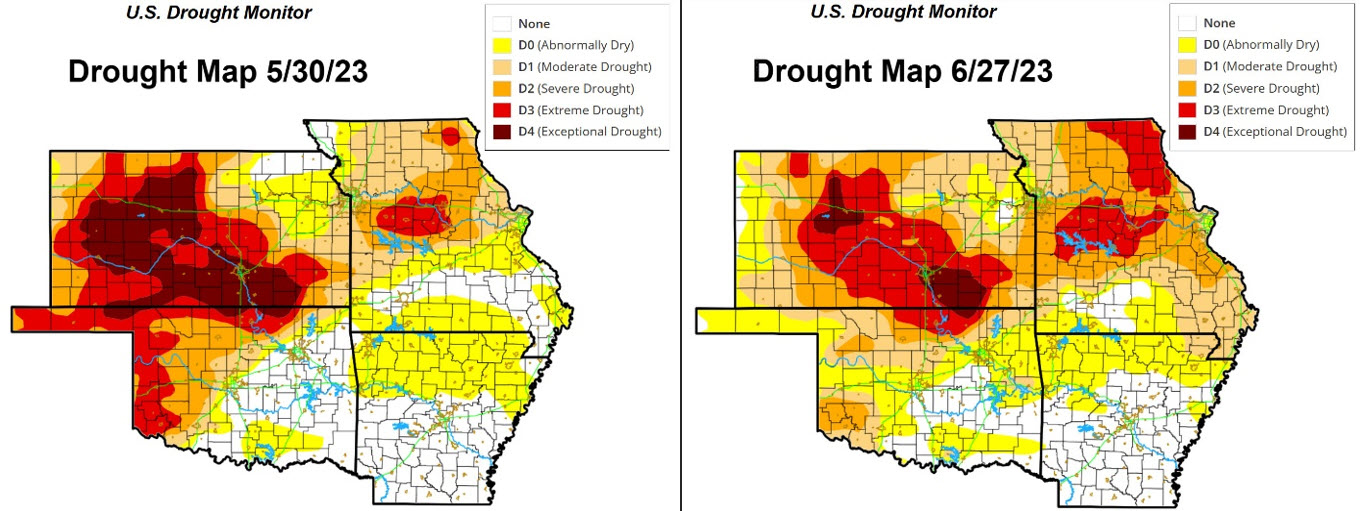While I hated rotating shift work with its unhealthy impacts, especially as I got older, there were some nice things about working the evening and overnight “graveyard” shifts. Sunrises and sunsets could be watched on a quiet shift.
In recent years, with the improvement of mobile phone cameras, I took a few nice pictures. The National Weather Service (NWS) radar dome and balloon inflation building have beauty in their own way, with the sunrise or sunset in the background.
So where am I going with sunrises and sunsets? Routine weather balloon launches/upper air observations in the Central U.S. time zone occur in the early daylight morning and early evening (great for sunrise and sunset pictures!!!). They are a part of a coordinated global effort to capture the state of the global atmosphere twice a day at the same time at approximately 0000 Coordinated Universal Time (UTC) and 1200 UTC. Sometimes additional launches are done in a region to gather data that aids in improving forecasts for severe weather and large storm systems like hurricanes. Extra launches also have aided in providing data for meteorological research.

Not every National Weather Service office sends up weather balloons. The Springfield office at the airport northwest of town is one of 92 NWS facilities that take upper air observations — and among over 800 worldwide.
The balloon is made of latex and withstands extreme cold while expanding from a diameter of around 1.5 meters to around 6 to 8 meters before it pops. A typical flight will exceed 100,000 feet and when there are strong winds aloft, the balloon can travel 150 to 200 miles from the launch point. Link: More information concerning the NWS upper air observation program.

At NWS Springfield, the balloon is inflated with hydrogen gas, which is flammable, so yes, there is annual training which is heavy on the safety aspects on handling pressurized flammable gas. Once inflated, a string is attached with a parachute and a small electronic box called a radiosonde, which collects temperature, humidity, and tracking information (GPS). A computer at the main NWS building receives and processes the incoming signal from the radiosonde and then transmits data, which is archived, and a coded message, which is used for a variety of weather observation and forecast purposes.
Weather conditions can make launches difficult, especially high winds. Here is a launch from the NWS Springfield on November 11th, 2015 when winds were gusting to around 50 mph (YouTube). Launches are postponed or canceled when lightning is nearby.
Data from upper air observations have so many uses and are too numerous to list. To be honest, I don’t know them all! They can be used by meteorologists in real time to try to predict the onset and severity of thunderstorms or determine precipitation type with a winter storm.
The data is also used in numerical modeling by powerful “super computers”. Model output is based on current weather observations taken from many platforms, including upper air, surface and ocean observations, remote sensing such as satellite data, and others. The data is formatted into the model’s computational framework, basically giving the model an estimate of the state of the atmosphere at the beginning or initial time of the model. The model or simulation then computes predictions for temperature, precipitation, and hundreds of other meteorological elements from sea level to the top of the atmosphere.
Private (for profit) and public sector companies and organizations utilize the weather model output. The weather forecast you see on your phone is likely derived from a numerical weather model. Weather models vary in their purpose and design and can run on different geographical scales and time frames.
Traditionally, most of the data used for weather models and simulations comes from government related organizations and in the U.S. the government data is (mostly) freely available. This is also true of the actual computer modeling as well, although recent trends in the computer industry have allowed private sector companies to develop their own models as well. An example of this is the The Weather Company which is now part of IBM. You will see some of their data in the local KY3 and KOLR10 smartphone apps.

When you open your phone’s weather app, remember the technology framework that goes into it, including that NWS meteorologist at the airport launching a weather balloon at the end of their overnight shift. The forecast is never perfect, but they are getting better.

State drought is worsening
I wish I could stop writing about drought. We went to a neighbor’s house one evening earlier this week and he mentioned his stock ponds were almost dry and that hay output from his recent cutting was way down. My weather station and rain gauges did not see much rain in June. In Greene County, conditions have worsened, but that may be accelerating now that we have seen temperatures well up into the 90s to near 100 degrees.
With every front, I am hopeful, but have often been disappointed in the rain amounts. A comparison of conditions from late last month shows worsening drought over much of Missouri but some improvement over Kansas and Oklahoma.
The Missouri Department of Natural Resources has activated the Missouri Drought Assessment Committee with conditions over the state worsening.
Forecast models over the next two weeks offer some hope with this week’s hot air mass being pushed more to the south and southwest and a more active storm pattern possibly taking shape. However, summer precipitation can be quite variable. Hopefully next month we can talk about some rain!


